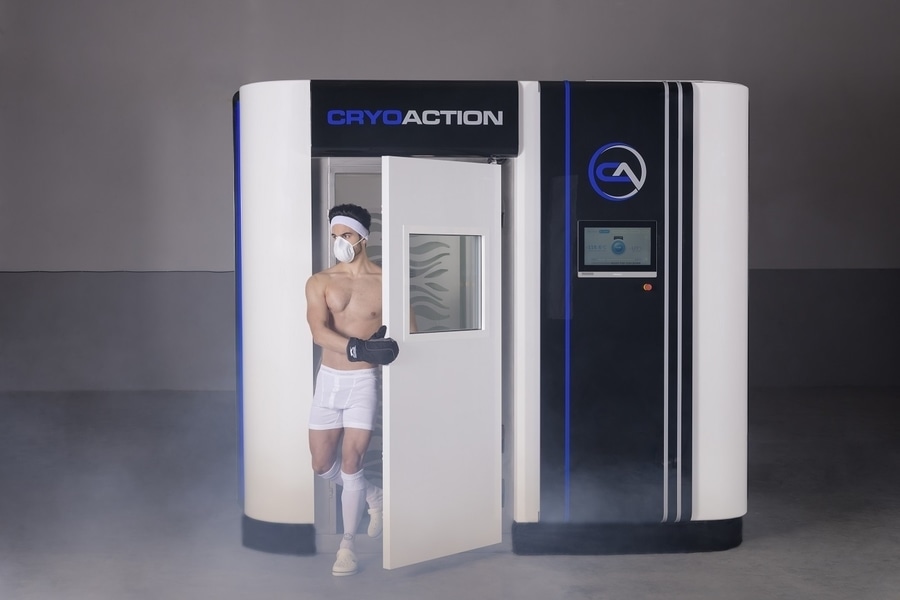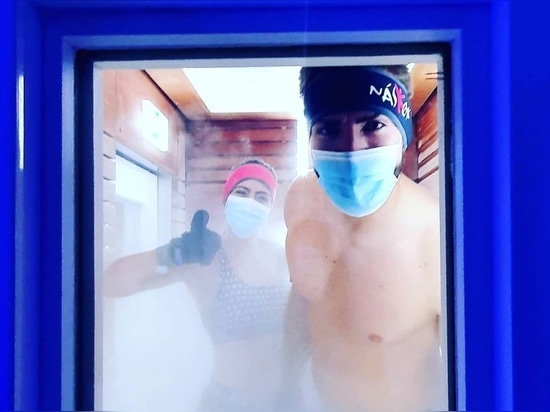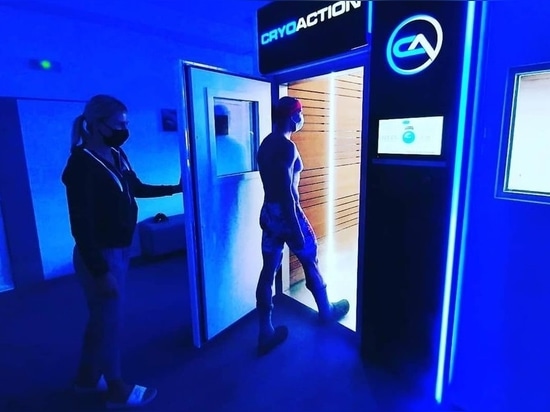
#Product Trends
Cold Comfort: Cryotherapy in Aesthetics
Extreme cold has long played a role in reducing swelling after injuries and in the removal of warts, verrucas and some types of skin cancer. Now cryotherapy is growing in popularity in aesthetics too, with those in the business claiming it can help with everything from acne to skin rejuvenation.
UK-based Ada Ooi, celebrity facialist, Chinese medicine practitioner and founder of the 001 Skincare London brand, has launched the CRYOpress. This is an ice facial home massager which reaches a temperature of between -8 and -25 °C in the freezer and is then rolled across the face for up to 15 minutes with the aim of increasing blood circulation and encouraging cell recovery and renewal. The tool is also used in clinics, in tandem with other treatments, including Chinese medicine techniques. Ms. Ooi explained:
“It’s all about shocking the skin. We roll the device on the skin and the nerves send a signal to the brain to say it’s far too cold and blood rushes to the area.”
She suggests cryo aesthetic treatments can be used to treat wrinkles, uneven or dull skin tone and acne:
“With acne, the cooling can help constrict blood vessels, which causes temporary numbness and calms down redness and inflammation.”
In From the Cold
Whole body cryotherapy, stepping from a sauna into a cold pool, ice room or even the snow, has long been promoted for general wellness. Now, with lockdowns resulting in the closure of gyms and spas, there has been a surge of interest in the possible advantages of cold water swimming and even cold air running. Proponents claim the body’s shock response results in health benefits ranging from inflammation reduction to improved mental health.
UK company CryoAction supplies whole-body cryotherapy chambers that reach temperatures of between -130 °C and -160 °C, via a hybrid electricity and nitrogen cooling system. Ian Saunders, Chief Executive Officer, said:
“Exposing the skin to these temperatures brings about a series of physiological reactions which help the body to repair, recover and reinvigorate.”
He suggests health benefits include easing the symptoms of chronic illness, improving skin conditions and treating anxiety and depression. According to him, cryochambers could also play a role in aesthetics:
“The rejuvenating properties of the cold help to protect against the signs of aging: promoting collagen production, reducing inflammation, and removing fine lines, wrinkles, and stretch marks.”
Tricking the Skin
Dr. Waseem Bakkour is a Consultant Dermatologist and Dermatological, Laser and Cosmetic Surgeon at several hospitals including The London Clinic. He uses more traditional cryotherapy. He explained:
“Cryotherapy is basically a treatment where we use liquid nitrogen (which boils at a temperature of -196 °C) to produce a cold burn type injury to the skin or the skin lesion. It is an old treatment that has been around for a long time. It can be used for verrucas and skin tags and, in the right hands, can be one of the most successful treatments for warts. It can also work for sun-damaged, potentially premalignant skin areas (actinic keratoses and Bowen’s disease) and some practitioners use it for a type of very thin low grade skin cancer known as superficial basal cell carcinoma. It can be used to lighten darkened patches of skin—but in my opinion, this is not the best treatment, lasers are better—as well as large freckles, lentigo or liver spots.”
But is cryotherapy effective as a beauty and rejuvenation treatment? Is there a future for cryo aesthetics? Dr. Bakkour said:
“The principle will be similar to the more traditional types of cryotherapy. It is all about causing a controlled injury to the skin. Basically, you are tricking the skin into thinking that there is a wound. It then starts to produce more collagen. One of the main differences between a baby’s skin and older skin is the collagen—the more collagen there is, the more radiant the skin looks: tauter and less wrinkly.”
He added:
“It is the same principle for most rejuvenation treatments. You trick the skin into thinking that there is a wound (whether you do it through heat, cold or actual physical injury). But you have to do it in a controlled manner, so you don’t cause scarring—and that is both machine dependent and practitioner dependent. I am sure there is potential for further developments in cryotherapy in the aesthetics industry, in promoting the forming of new skin or collagen.”
Ms. Ooi agreed:
“There is definitely a strong future for cryotherapy in aesthetics, and I think one of the areas in which cryotherapy wins is in the way it feels. Any level of coldness gives you a good level of sensation afterwards and if it feels very good then that has benefits too.”






